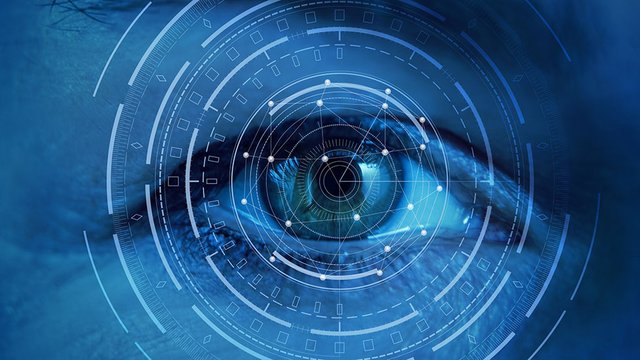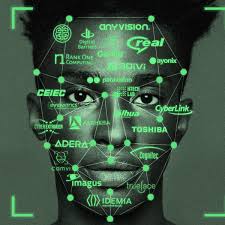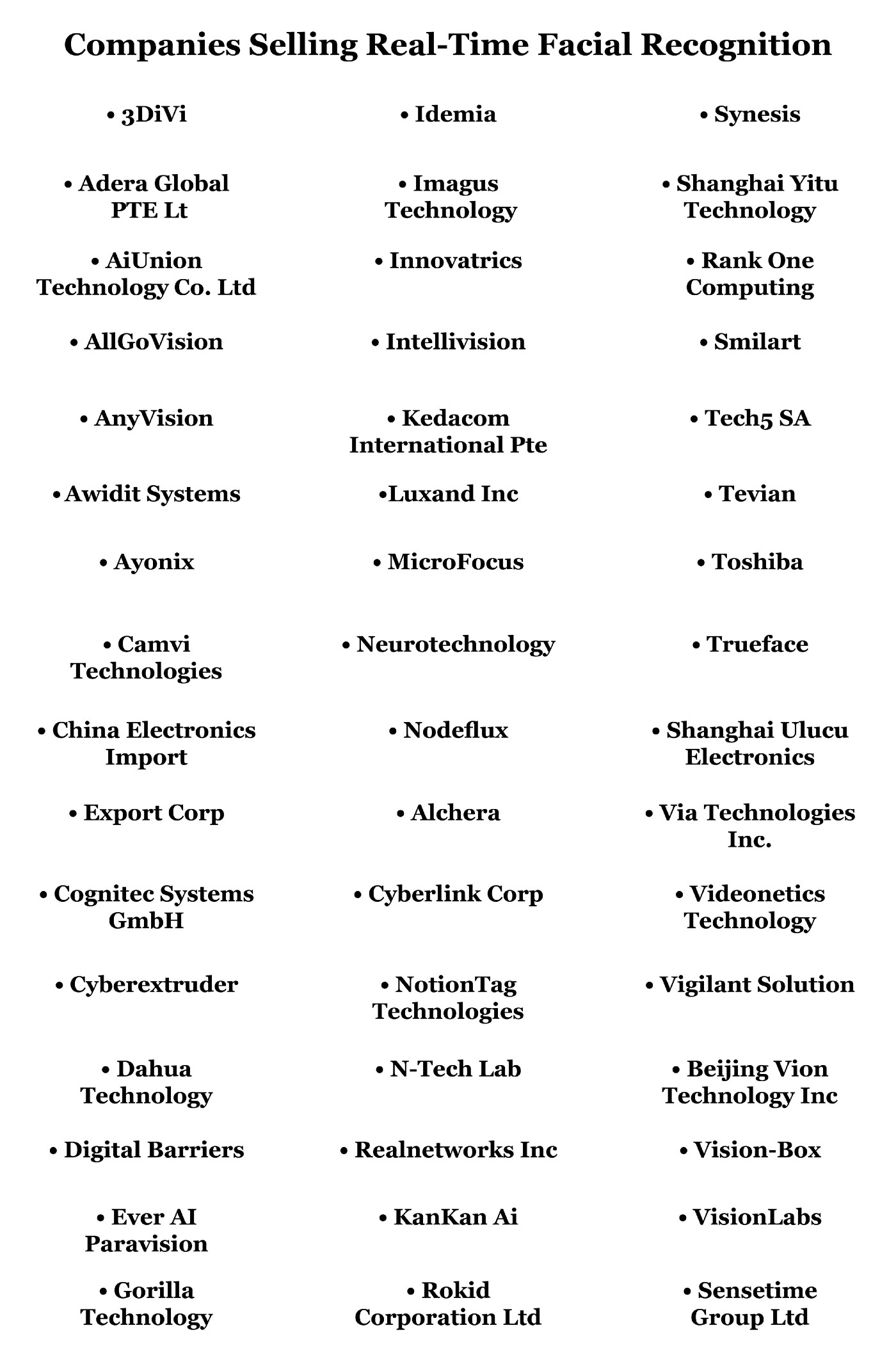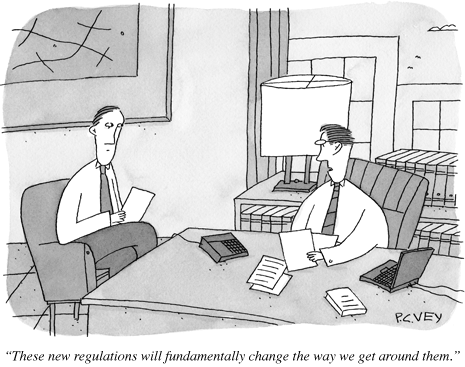There is a sprawling world-wide facial recognition industrial complex. Increasingly, individuals around the world are being recorded, identified, and tracked by companies that remain in the shadows.

By:
Eric De Grasse
Chief Technology Officer
15 June 2020 (Paris, France) – Last week Jeff Bezos publicly supported the Black Lives Matter organization, pledging $10 million to support racial justice and adding a banner to the top of the online retailer’s homepage declaring that “Amazon stands in solidarity with the Black community”, saying over the weekend he’s “happy to lose” customers upset by his Black Lives Matter support.
Funnily enough, he forgot to mention Amazon is arguably singular among its mega-tech peers in its determination to provide American law enforcement with tools experts say only enable racist policing. It sells its “Rekognition” facial recognition software to U.S. police departments, even though study after study (the largest done by the American Civil Liberties Union and a team from the MIT Media Lab) found the software was fundamentally racially biased, disproportionately misidentifying people.
The threat of computerized misidentification isn’t just an academic error, but a potentially ruinous one that could improperly influence police officers prior to an encounter, or even cause them to seek a search warrant, by presenting them with a false criminal history. Surveillance is a racial justice issue. The two cannot be separated.
NOTE: and there is, of course, an irony. If you could fix all the biases that make facial recognition less accurate for women and people of color than for white men, you’d be left with an even more powerful surveillance tool that could more readily be used to target marginalized communities.
This week, facing enormous public heat, Amazon did a climb down, announcing a “one-year moratorium” on selling its facial recognition software to law enforcement, but it was a pretty conservative move in light of all factors. In its press release it said it did so to give Congress time to “place stronger regulations to govern the ethical use of facial recognition technology.” But it will continue to offer the technology to organizations like the International Center for Missing and Exploited Children to investigate cases of human trafficking, and other non-law enforcement entities. And insiders said it will continue to research and develop its facial recognition software in the intervening year.
IBM and Microsoft jumped on the bandwagon and said they, too, would not sell their facial recognition tools. In fact, IBM made a sweeping pledge not to research, develop, or sell facial recognition software to anyone and said the U.S. needed legislation. Microsoft, too, called on US legislators to pass federal regulations on the use of the technology without going as far as IBM.
In the immediate term, Amazon’s moratorium will have a greater impact than IBM or Microsoft on the use of facial recognition by law enforcement. Amazon sells Rekognition directly to numerous law enforcement agencies; Microsoft does not currently sell facial recognition tools to US police departments, and IBM’s market is quite small.

What is not known is if there will be any affect on all the lesser-known firms that sell facial recognition technology to U.S. police departments. There is a sprawling world-wide facial recognition industrial complex.
NOTE: in the U.S., attendees at sporting events and concert halls are surveilled without notice. Dave Gershgorn has been running a series on Medium. In his most recent piece, he notes that at this year’s college football Rose Ball game four cameras hidden underneath digital signs captured data on attendees, generating 30,000 points of data on how long they looked at advertisements, their gender and age, and an analysis to try and identify weapons or whether they were on a watch list of suspicious persons. There was no notification to attendees this was happening.
The scope of this facial recognition activity by these companies is overlooked. Increasingly, individuals around the world are being recorded, identified, and tracked — by companies that remain in the shadows.
NOTE: based on two different tracking surveys by NIST (the U.S. government organization responsible for setting scientific measurement standards and testing novel technology) and OneZero (the tech/science research firm) there are 45+ companies world-wide that sell facial recognition technology. About 20 sell to U.S. police departments and other U.S. law enforcement agencies, plus U.S. military intelligence entities:

Three noteworthy points from the two surveys:
• Toshiba, best known for making PCs, is running more than 1,000 facial recognition projects around the world (many with U.S. police departments), including identity verification systems at security checkpoints in Russia and for law enforcement in Southeast Asia.
• RealPlayer. Remember them? More than a decade before Spotify, and years before iTunes, there was RealPlayer, the first mainstream solution to playing and streaming media to a PC. Launched in 1995, within five years RealPlayer claimed a staggering 95 million users. It crashed in the dot-com bust … but then began dabbling in facial recognition software. It now sells that technology to U.S. public schools and for U.S. military drones, and even launched a surveillance project in São Paulo, Brazil that analyzes video from 2,500 cameras.
• Software contractor Microfocus is one of a handful of companies that are keeping the aging COBOL language alive by making facial recognition that can scale to thousands of CCTV cameras, scattered across the globe, with the ability to monitor those cameras from one central dashboard or multiple dashboards.
And then there is technology like Clearview AI and PimEyes, facial recognition websites that can track the same person’s image all around the internet. Both are used by police and law enforcement agencies around the world. PimEyes’ facial recognition engine is not as powerful as Clearview AI’s app and unlike Clearview AI it does not scrape most social media sites which Clearview AI does and is the main benefit for law enforcement. Facial recognition search sites were rare but are now growing. They were (are) being used by law enforcement to monitor the George Floyd protests.

And let’s be clear. All three biggies … Amazon, IBM and Microsoft … are heavily influencing the conversation regulation-wise. They will unleash their legions of lobbyists to oppose stringent regulation. They aren’t trying to stop regulation outright; by calling for stronger regulation, they leave open the opportunity to shape new legislation in their favor. They did it/are doing it with data protection laws. They’ll do it with facial recognition technology laws.
Note: Microsoft called for “meaningful privacy protection through legislation” in Washington state and then privacy campaigners found that Microsoft played a significant role in drafting the original bill. Corporate interests, including those of Amazon and Comcast, a cable provider, also successfully inserted carve-outs for much of their existing data collection practices which make the current proposals almost meaningless, according to privacy groups.
In fact, Microsoft has a history of lobbying to craft facial recognition regulations at the state level. In Washington, for example, a state senator employed by Microsoft wrote the law that governs facial recognition. California, Maryland, South Dakota, and Idaho have since taken up similar legislation which mirrors the Washington bill word-for-word in some places.
In a Zoom chat last week about the facial recognition technology being used by law enforcement to scan the George Floyd protests across the U.S., Jack Kenney of Privacy International said that facial recognition technology will ultimately work to the larger firms’ advantage:
It’s just the way it works. Its pretty much the same way the GDPR in Europe was gutted and California’s privacy law will get eviscerated. The public does not like facial recognition and so Big Tech gets worried this sentiment will translate into a ban or moratorium. So they get into the wheels and gears, they get out in front of it with public announcements, and they coopt it. They can support regulation that they can work around, that can give them rules that will allow them to continue to develop the technology.
Result? It will all translate into toothless regulation that allows tech companies to weather the current backlash against police surveillance and then quietly return to business as usual. I don’t think Amazon’s statement tells us that there has been a real shift in their position regarding police’s use of facial recognition technology. The way I read their statement, it means that in one year we will be hearing Amazon responding to any critiques by saying that they are following existing regulations.
I’ll finish with a facial recognition technology video “primer” (it runs about 9 minutes but our graphics team incorporated some cool stuff to keep it flowing) that we produced for one of our clients, Herta Security, which uses it for its client presentations: